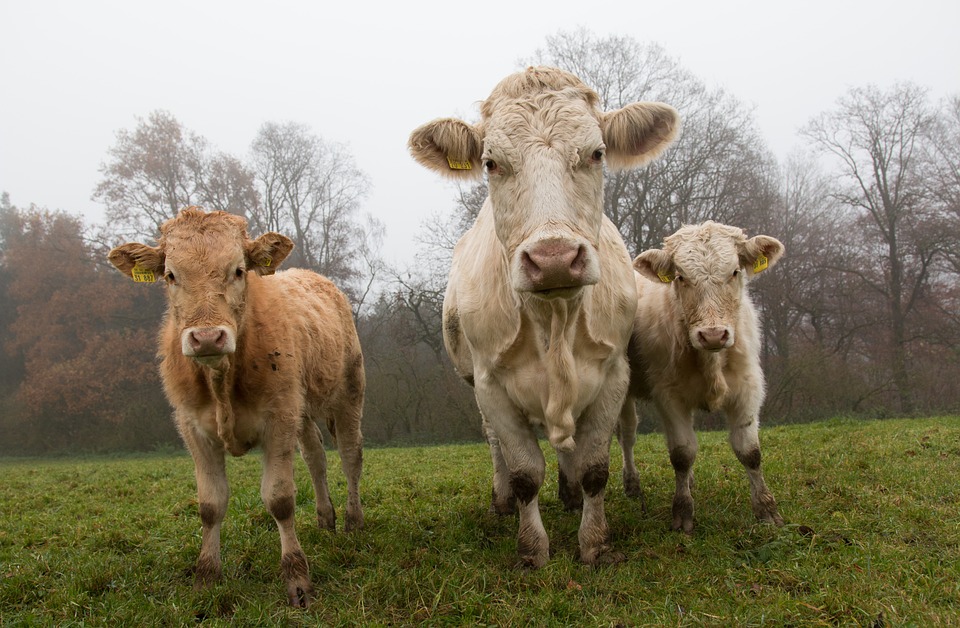Investigations begin over EPA’s failure to regulate factory farm pollution for over a decade
01/20/2017 / By Vicki Batts

At the end of November, it was announced that the Environmental Protection Agency’s Inspector General would finally be examining the agency’s lack of regulation and failure to oversee large livestock operations. Several environmental groups are also planning on filing suit.
For the last decade, factory farming endeavors have basically been given a pass when it comes to emissions. Thanks to the failure of the EPA to properly regulate the industry and adequately measure toxic air pollution, livestock farms have been polluting the air indiscriminately and without any kind of government supervision. One can only imagine the amount of toxins that can be excreted over the course of ten years.
Emissions from livestock operations can fall under three different federal laws, if the pollution they create reaches certain thresholds. Larger farms known as concentrated animal feeding operations, or CAFOs, also fall under this umbrella. But, because the government and livestock industry have failed to agree on accurate ways of measuring those emissions, factory farming facilities have somehow managed to escape government scrutiny.
It is really rather offputting that the industry gets to have so much say in federal testing protocol that they can actually impede the administration of such efforts all together, isn’t it? Nearly twelve years ago, the EPA announced that it would be developing a way to accurately measure air emissions from factory farms. But, the agency has yet to complete the process. This failing has finally prompted the EPA’s Office of Inspector General — the agency’s own internal watchdog — to investigate the matter.

Brent Newell, an attorney with the Center for Race, Poverty and the Environment – which has sued the agency to regulate livestock facilities — commented, “The agency is reluctant to regulate agriculture and it’s a big problem in the eyes of the inspector general.”
“They’re not exempt from these laws,” he added.
So, what exactly prompted the Inspector General to finally step in? A 2005 deal known as the Air Compliance Agreement between the EPA and factory farms has reached something of an impasse. Under this deal, livestock operations were not subject to air emissions violations, but in exchange, the farms were required to allow the EPA to measure their emissions, so the agency could gather data that would allow it to eventually create standards for air pollution.
However, it became rather apparent that there was a small hitch in these so-called plans: the government never collected any data.
Michael Formica, an attorney with the National Pork Producers Council, says, “The government had no data. That’s when we said: ‘Let’s do a study.'” A report on the investigation is expected next spring. One can only hope that some kind of action will be taken, and that those who appear to have deliberately delayed the regulation of factory farming emissions will be held accountable.
In the last thirty years, the number of CAFOs has skyrocketed from about 3,600 in the 1980s, to about 19,000 today. Environmental groups have doubled down on their calls for emissions regulations as the number of industrial livestock operations have continued to increase. Many other industries are subject to pollution regulation, why should livestock be any different? A substantial amount of data has shown that factory farms are major producers of pollution.
Jonathan Lovvorn, an attorney with the Humane Society of the United States, which has petitioned the agency to regulate CAFOs under the Clean Air Act, points out that the laissez-faire attitude towards factory farming is not doing anyone any favors. Lovvorn says, “The EPA has put in regulation on oil and gas, and proposed regulations on landfills, but they’ve done nothing on CAFOs.”
While it is true that it can be harder to monitor and strictly regulate the exact amount of air emissions being created by a factory farm, that kernel of truth should not be used as a means to escape regulation. The EPA has proven itself to be a thumb-twiddling bureaucracy time and time again. In 2008, under the Superfund law, the EPA exempted poultry and livestock industries from having to report leaks of ammonia, hydrogen sulfides and other hazardous substances.
In 2011, the EPA did release a report on emissions, but it only utilized data from a mere 25 farms. This was after the agency made exemption agreements with roughly 14,000 farms. The agency’s own Science Advisory Board dismissed their “study” as being useless beyond the farms involved.
Isn’t it time we all stopped kidding ourselves and asked the EPA what they are really trying to protect?
Sources:
HumaneSociety.org [PDF]
Submit a correction >>
Tagged Under:
This article may contain statements that reflect the opinion of the author





















